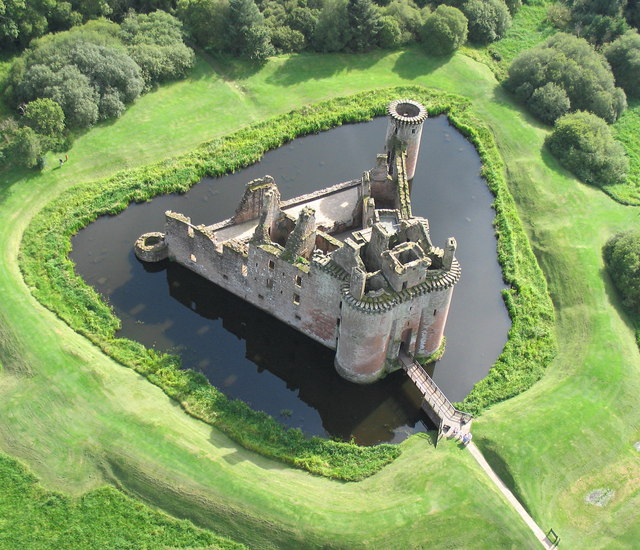India is known for its cultural heritage and most importantly famous for temples. There are lots of cave temples in India. Rock-cut architecture is a practice where either buildings or structures are carved in caves. Here is a sneak preview of some of the famous rock-cut temples of South India.
1. Undavalli Caves, Andhra Pradesh
 |
| This is the entrace to the 3rd floor of Anananthapadmaswamy temple |
Undavalli Caves boasts of ancient viswakarmastapathis and is an excellent example for rock-cut temples in India. This cave is a finest example of Gupta architecture. This cave is carved out of sandstone.There is a large statue of Lord Vishnu in a reclining posture; this statue is made from single block of granite. Apart from a big statue of Lord Vishnu, there are lots of statues for the Lords Brahma and Shiva. It is a treat to watch the beautifully carved sculptures in these caves.
2. Aihole, North Karnataka
 |
| Ravana Phadi Cave at Aihole, Karnataka |
Aihole is a temple complex and a popular tourist attraction in North Karnataka; it is believed that this may be included in the UNESCO World Heritage List. It is definitely hard to believe that this temple was built 1400 years ago. Aihole is the best example for Badami Chalukya architecture; this type of architecture have three basic features in them, namely, pillared verandah, columned hall, a sanctum cut out deep into rock. There are lots of temples in Aihole and these are subdivided into two categories; Kontigudi group and Galaganatha group. Some of the temples in these groups include Lad Khan temple, Durga temple, Suryanarayana temple, Triyambakeshvara temple, Huchimali temple, Ravana Phadi cave, etc.
3. Gavi Gangadhareshwara Temple, Karnataka
 |
| The Disc and its shadow at Gavi Gangadhareshwara temple |
Gavi Gangadhareshwara temple is yet another excellent of Indian rock-cut architecture. The main deity of this temple is Shiva; this temple is a protected monument under the Karnataka Ancient and Historical Monuments, and Archeological Sites and Remains Act 1961. What is so special about this temple? Every year on Makar Sankaranthi (a festival of harvest in India) day, sun rays will fall directly on the deity of Shiva inside the cave for one hour. Isn’t it amazing to know the knowledge of our ancestors when there was no Internet or very less developments in Science?
4. Kottukal Cave Temple, Kerala
 |
| Kottukal Cave temple Image courtesy: Wikipedia |
It is believed that this rock-cut temple in Kerala was built between 6th and 7th century AD when Nedila Paranthaka Nedumchadayan was ruling Chadayamangalam. Lord Shiva and Ganesha are the primary deities of this rock-cut temple. It is said that incarnations of Lord Shiva brought this huge rock to this place and the smaller rock called the “chummaadu paara” supports the bigger rock. The daily rituals are taken care by the Travancore Devaswom Board. This is one of the major tourist attractions in Kerala especially due to the calmness and serenity of the place.
5. Mahabalipuram, Tamil Nadu
 |
| Pancha Rathas of Mahabalipuram Image courtesy: Wikipedia |
When visiting Tamil Nadu, one of the must visit rock-cut architectures or cave temples would be Mahabalipuram or Mamallapuram, a UNESCO World Heritage Site. This cave temple was built between the 7th and 9th centuries AD by Pallavas. The monuments in Mahabalipuram boast of the Dravidian architecture. Some of the notable structures include Thirukadalmallai, a temple of Lord Vishnu; Varaha Cave temple, Pancha Rathas, and the Descent of the Ganges.
6. Thirunandhikkara Cave Temple, Tamil Nadu
 |
| Thirunandhikkara cave temple, Kanyakumari Image courtesy: krishnasepages |
This is another great example of rock-cut architecture; this was built between the 7th and 8th centuries AD by the Pallavas. This cave temple is part of the Thirunandhikkara temple of Kanyakumari District. It is believed that it was first the Jains who made this cave temple in the 7th century CE, which was later taken by Hindus.
It is not necessary that one has to go on a religious pilgrimage tour to visit these cave temples; these rock-cut temples are indeed a tourist attraction in itself.









